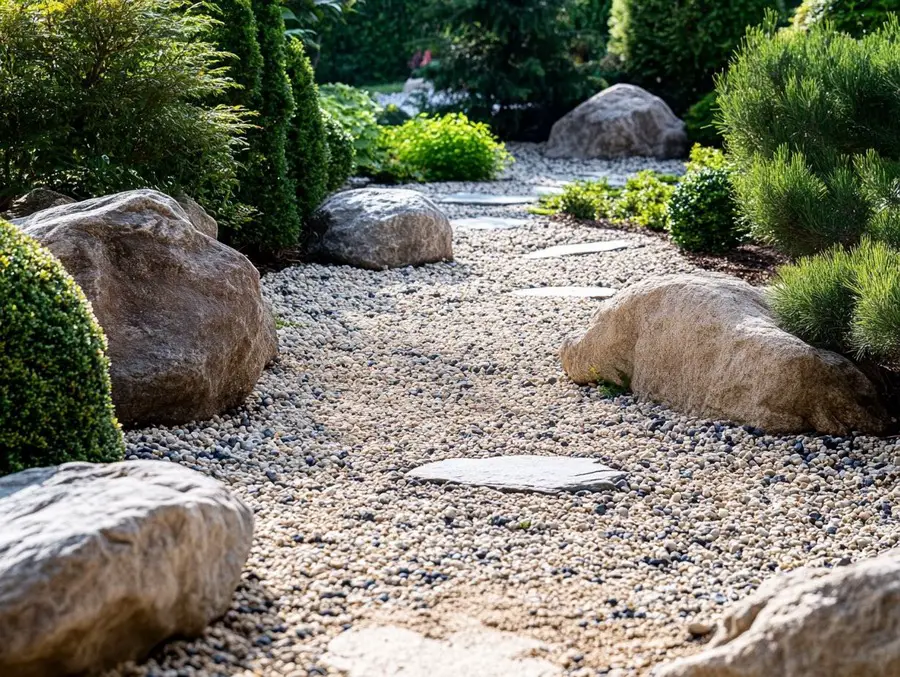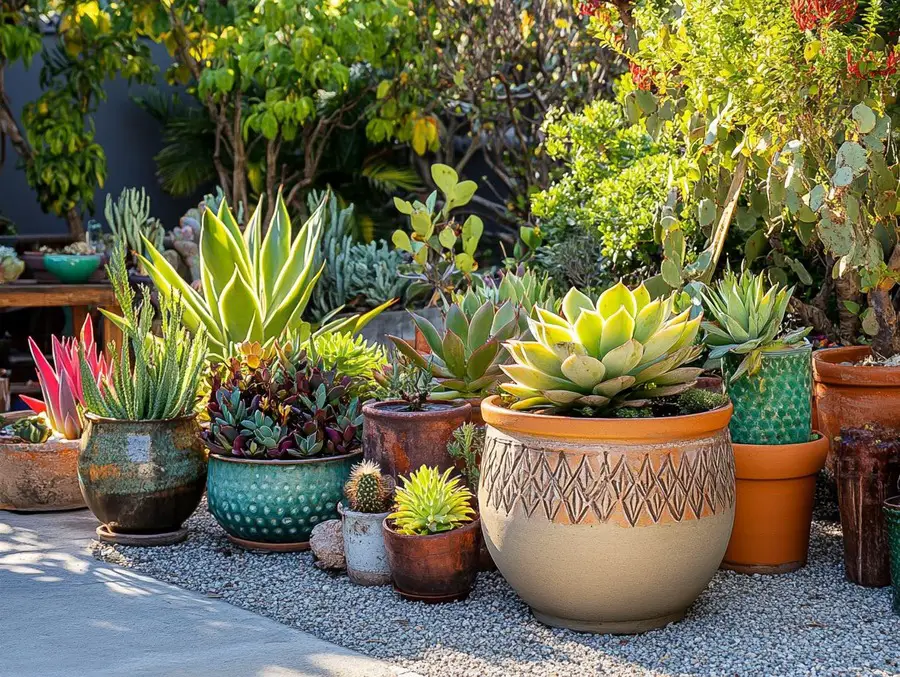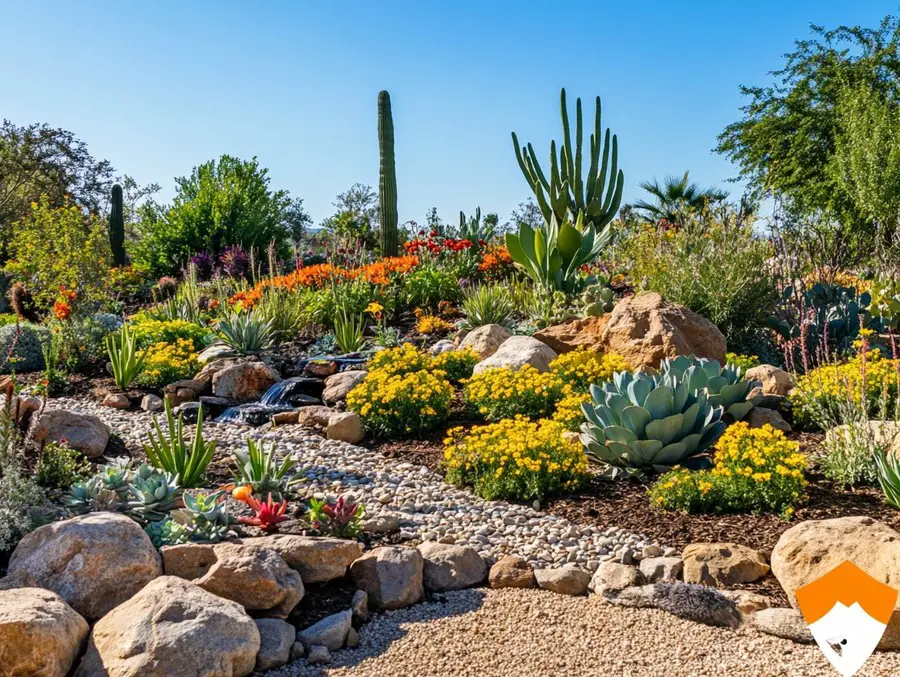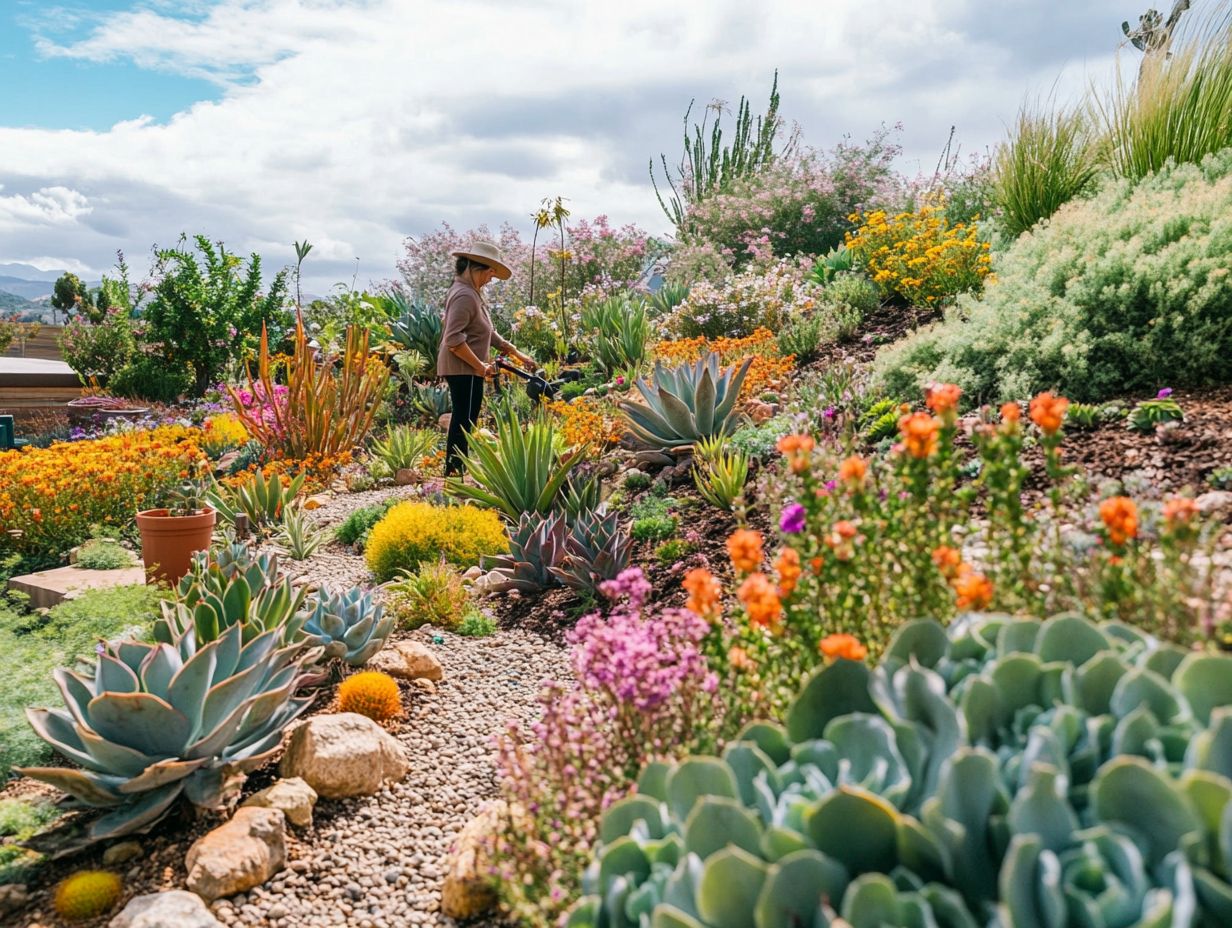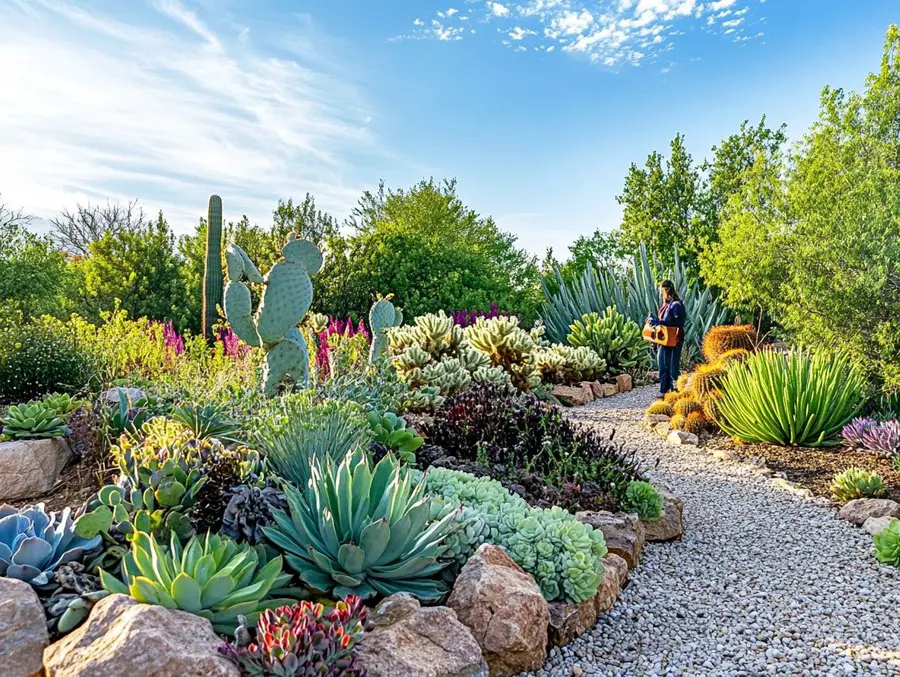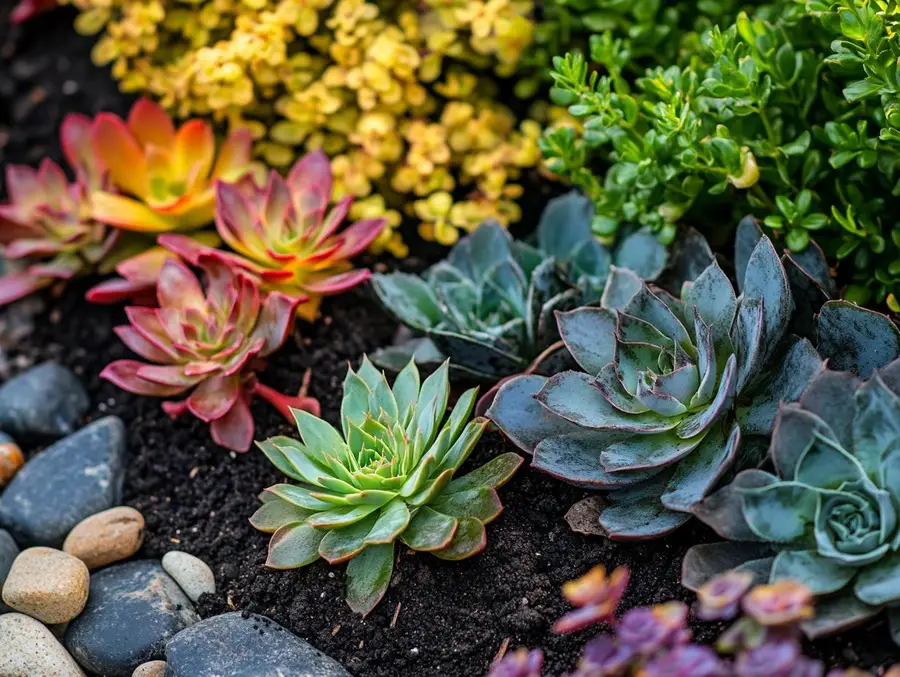We use affiliate links. If you purchase something using one of these links, we may receive compensation or commission.
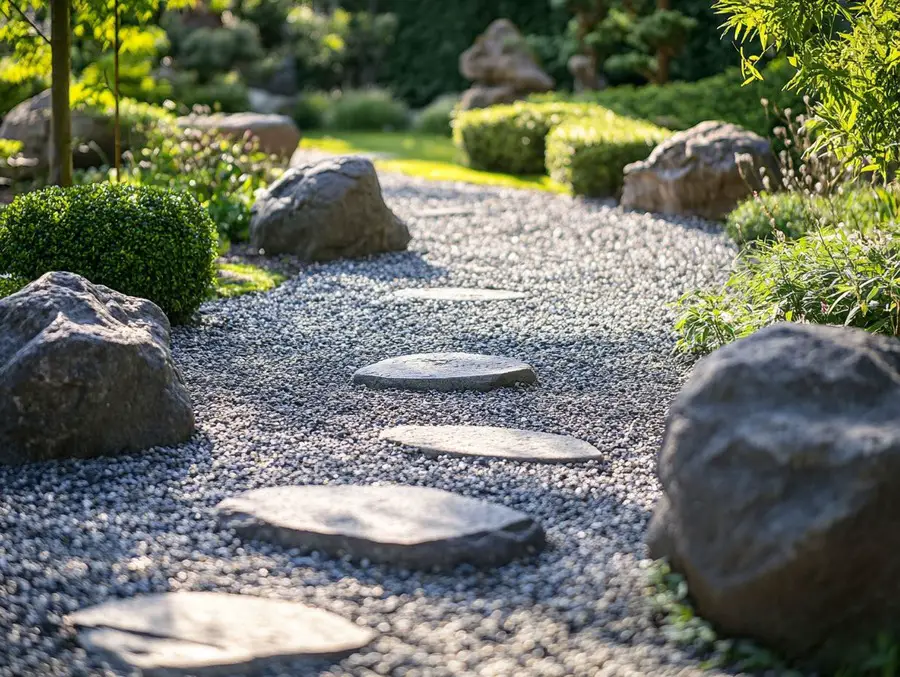
Using Rocks and Gravel Effectively can transform your outdoor space, adding texture, function, and style without the extra maintenance.
If you’re struggling with erosion or poor drainage or just want a fresh look for your landscape, these natural materials offer simple, lasting solutions.
With the right placement and design, you can create a stunning, low-maintenance yard that thrives year-round.
Using Rocks and Gravel Key Takeaways
- Using Rocks and Gravel Effectively means selecting the right materials for drainage, erosion control, and aesthetic appeal.
- Proper placement helps improve soil stability, reduce water runoff, and create beautiful pathways or garden accents.
- By choosing durable, region-appropriate stones, you can enhance your landscape and keep maintenance low and sustainability high.
Using Rocks and Gravel Effectively: Achieve an Epic Look
Rocks and gravel might not be the first things that come to mind when you’re thinking about landscaping and gardening, but they can actually pack a punch in transforming your outdoor space.
These natural materials can boost the visual appeal of your garden while also offering some functional benefits.
Whether you’re looking to learn about the different types available and their various uses or need tips for proper placement and maintenance, this article has got you covered.
You’ll also want to consider important factors like environmental impact and cost so you can make informed choices.
Get ready to discover how rocks and gravel can take your outdoor projects to the next level!
Benefits of Incorporating Rocks and Gravel
Incorporating rocks and gravel into your outdoor design can bring a ton of benefits that really boost both the functionality and aesthetics of your landscape.
Whether it’s providing effective drainage or preventing soil erosion, these versatile materials are key players in creating garden pathways and decorative stone features.
They help stabilize the soil, ensuring that your plants thrive while also offering a stylish, low-maintenance alternative for your landscaping needs.
Using rocks and gravel can keep your projects budget-friendly, making them a go-to choice for both DIY enthusiasts and professional landscape architects.
These materials channel water and minimize runoff effectively, and they also improve air circulation around plant roots, which means healthier growth for your greenery.
When placed strategically, rocks and gravel can really enhance the visual appeal of your space, offering a variety of colors and textures that complement your flowering plants and shrubs.
And the best part? They require minimal upkeep since they don’t rot or decay like organic mulches do, making them a sustainable option for environmentally conscious gardeners.
By embracing these natural elements, you can create innovative landscaping solutions that strike a perfect balance between beauty and practicality, positioning them as must-haves in contemporary design trends.
Types of Rocks and Gravel
Understanding the different types of rocks and gravel is key to making smart choices in your landscaping projects.
Rocks can vary quite a bit in their mineral composition, and each type has its own unique traits that make it perfect for certain uses, whether you need decorative stone for a rock garden or aggregate for construction materials.
Gravel is another versatile option, often categorized by size and color variations, that can really boost the visual appeal of your outdoor spaces.
By getting to know these rock types and their properties, you’ll be better equipped to choose the right materials for your needs.
Common Types and Characteristics
When you’re diving into landscaping, it’s good to know about common types of rocks and gravel, like limestone, granite, and basalt.
Each of these has its own unique characteristics that can really influence how you use them.
For example, limestone is a favorite because of its light color and porous nature, making it perfect for drainage systems and garden borders.
On the other hand, granite is durable and comes in a variety of colors, which makes it great for adding some aesthetic appeal to your hardscaping elements.
By understanding these rock types and their traits, like weight distribution and bulk density, you can really make a difference in your landscaping projects.
Don’t forget about texture! The way gravel feels can really enhance the visual interest of your outdoor spaces.
For instance, the smooth, rounded particles of river rock create a calming effect when you use them in pathways or around water features.
Meanwhile, the angular shape of crushed stone helps with better weight distribution, making it a solid pick for driveways.
The weight of these materials also matters; heavier stones like basalt provide a strong foundation, while lighter options like pumice are perfect for raised beds where soil aeration is key.
By recognizing these differences, you can make smarter choices when selecting from the vast array of options available to you.
Uses for Rocks and Gravel
Rocks and gravel are super handy when it comes to landscaping, serving both practical and aesthetic purposes that make them must-have materials for your outdoor designs.
Whether you’re looking to improve drainage, create a stunning rock garden, or build a gravel driveway, they can really boost both the functionality and the look of your space.
Using these materials for erosion control protects your property and also helps out the environment.
Their versatility opens up a world of creative and functional design options, transforming any garden or outdoor area into a beautiful retreat.
Using Rocks and Gravel In Landscaping and Gardening
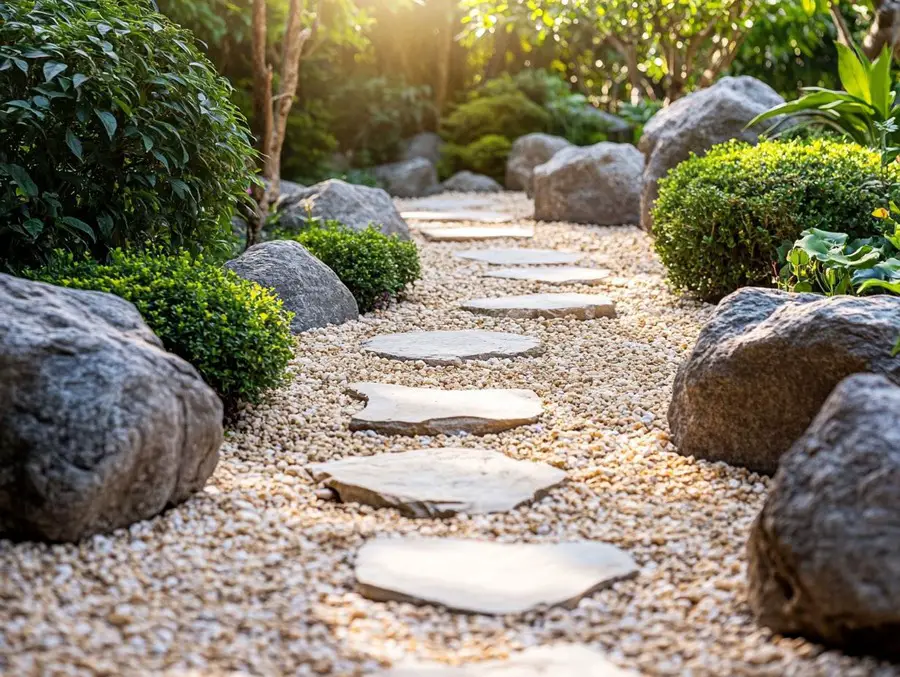
In landscaping and gardening, you can use rocks and gravel to create beautiful garden pathways that make it easier to get around and also add some nice visual flair.
By carefully considering where to place the rocks, you can guide foot traffic while also improving soil health.
You have plenty of options when it comes to the types of stones you can use, each bringing its own unique textures and colors to the mix, setting the vibe for your entire landscape.
Using small stones as ground cover is a smart move. It makes maintenance easier and helps regulate soil temperature, which is great for the health of neighboring plants.
With a little strategic thinking in how you arrange these materials, you can create a smooth transition between hardscapes and softscapes, encouraging a thriving environment for a variety of plant species.
By thoughtfully selecting and positioning the rocks, you can create microhabitats for beneficial insects and wildlife, ultimately leading to a flourishing ecosystem that benefits your garden as a whole.
Proper Placement and Installation
Proper placement and installation of rocks and gravel are key to getting the most out of your landscaping projects.
When you use effective installation techniques, you can create strong drainage systems that keep water from pooling and manage surface runoff like a pro.
Incorporating gravel stabilizers can make your pathways more accessible while still looking great.
By understanding how to strategically position rocks, you’ll boost functionality and elevate the overall design of your outdoor space.
Tips for Effective Use
To make the most of rocks and gravel in your landscaping, you’ll want to keep some practical tips in mind.
First, choose the right type of gravel based on what you need it for, whether that’s drainage solutions or spicing up your decorative features.
Using proper installation techniques can really improve the design and reduce your future maintenance headaches.
Don’t forget about weed control. It’ll help keep your garden pathways looking sharp.
When you’re laying down gravel, be sure to create a stable base with landscape fabric.
This stops weeds from popping up and also allows for proper drainage.
Aim for a gravel layer that’s at least two to three inches deep to handle foot traffic without a hitch.
A little regular raking and replenishing will keep your surfaces looking level and fresh.
To manage weeds, consider going the organic route with mulch or a non-toxic herbicide to keep those unwanted plants at bay without harming the environment.
These strategies will give you a beautiful landscape and make sure your gravel features last longer and function well.
Maintenance and Long-Term Care
To keep your landscape looking fantastic, you’ll want to focus on regular maintenance and long-term care for your rocks and gravel.
This means keeping an eye on erosion control and making sure everything stays stable and visually appealing as the seasons change.
Periodic maintenance can help you avoid degradation and extend the life of your installations, ensuring your outdoor design remains beautiful and functional for years to come.
Finding a regular maintenance schedule is crucial for preserving the integrity of your landscaping.
How to Keep Rocks and Gravel Looking Great
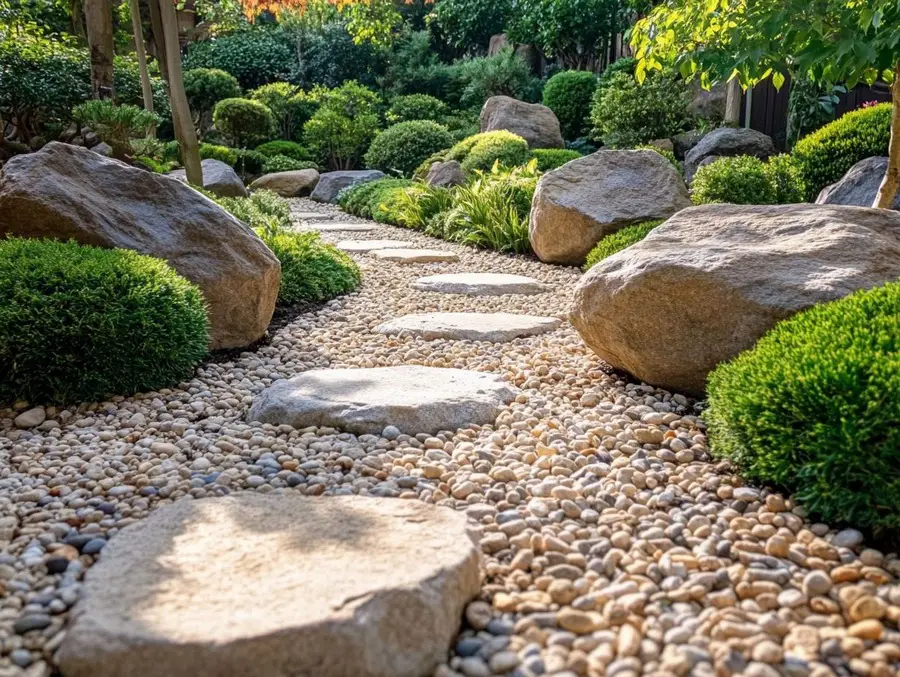
Keeping your rocks and gravel looking sharp takes a bit of consistent maintenance and a keen eye for detail.
It’s not just about a quick clean-up here and there; you really want to take a holistic approach.
For example, using mulch or landscape fabric under your gravel can work wonders for controlling weeds and cutting down on how often you need to weed.
Every now and then, think about replenishing your gravel or rocks to keep them looking full and textured, which definitely adds to the overall appeal.
If the weather tends to dull their shine, applying a layer of decorative stone sealer can help bring back that sparkle.
By weaving these strategies into your routine, you can keep your stone landscaping healthy and looking great.
Considerations Before Using Rocks and Gravel
Before you jump into adding rocks and gravel to your landscaping, take a moment to think about a few key factors, especially their environmental and ecological impact.
Sure, these materials can really spruce up your outdoor space, but it’s crucial to consider where they’re sourced from and how sustainable they are.
You’ll also want to look into the cost-effectiveness of different rock types and how they can improve your soil.
By taking this well-rounded approach, you can make sure your project turns out both stunning and responsible.
Environmental Impact and Cost
Assessing the environmental impact and cost of using rocks and gravel is crucial for any landscaping project you take on.
Quarrying these natural resources can lead to significant ecological issues, so it’s important to choose sustainable materials that help minimize this impact.
By understanding the cost-efficiency of different rock types, you can strike a balance between your budget and eco-friendly practices, leading to a more responsible landscaping approach.
This relationship between rock selection and financial implications is key for both short-term projects and long-lasting installations.
For example, while some materials might have a lower initial purchase price, their hidden costs related to environmental degradation can easily overshadow those immediate savings.
You’ll want to consider factors like the energy consumed during extraction, transportation emissions, and the potential for habitat disruption.
By opting for responsibly sourced aggregates that adhere to sustainable quarrying practices, you’ll support natural resource management and enhance the overall integrity of your landscaping design without breaking the bank.
Using Rocks and Gravel Effectively FAQs
What is the purpose of using rocks and gravel effectively?
Using rocks and gravel effectively can serve multiple purposes, such as improving drainage, preventing erosion, and adding aesthetic appeal to a landscape.
What types of rocks and gravel are best for effective use?
The best types of rocks and gravel for effective use are those that are of appropriate size, shape, and texture for the desired purpose.
Examples include river rocks, pea gravel, and crushed granite.
How can rocks and gravel be used to control erosion?
Rocks and gravel can be strategically placed on slopes or in areas prone to erosion to create a barrier and prevent soil from washing away.
They can also be used in combination with plants and mulch to further stabilize the soil.
Can rocks and gravel be used for water conservation?
Yes, rocks and gravel can be used effectively for water conservation by creating a permeable surface that allows water to penetrate and be absorbed into the ground.
This reduces runoff and helps replenish groundwater.
What are some creative ways to incorporate rocks and gravel into landscaping?
Rocks and gravel can be used in various ways in landscaping, such as creating pathways, building retaining walls, or creating a rock garden.
They can also be used as a contrasting element to plants and other landscaping features.
How can rocks and gravel be maintained for long-term effectiveness?
Rocks and gravel can be maintained by periodically raking and removing debris, as well as replacing any displaced rocks or gravel.
It is also important to monitor for weed growth and address any issues promptly.
Xeriscape Garden Design & Layout: Easy Water-Wise Beauty
What is xeriscaping? A beginner’s guide to drought-tolerant landscaping
Related Content
Visit my Amazon Influencer Page for videos and gardening products Grow Your Own Garden

